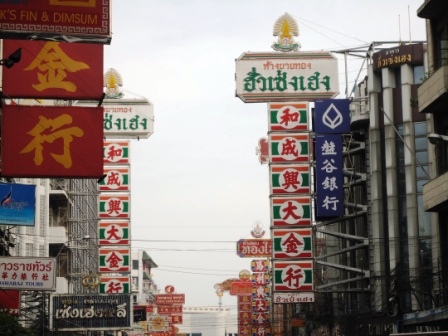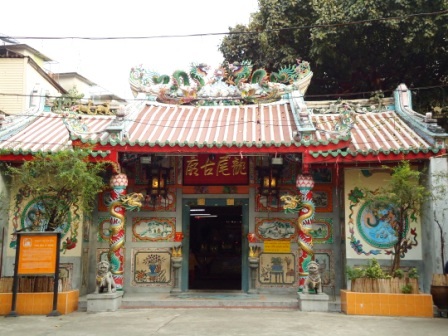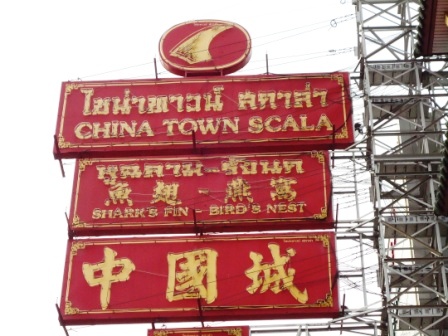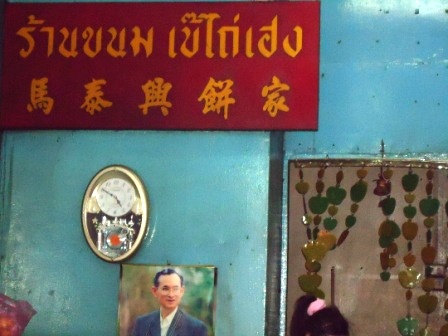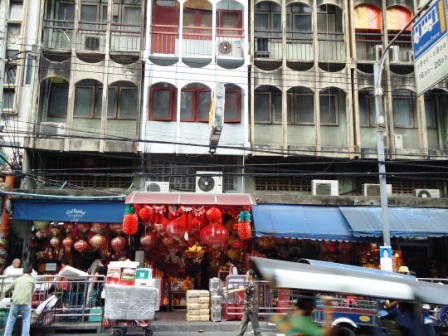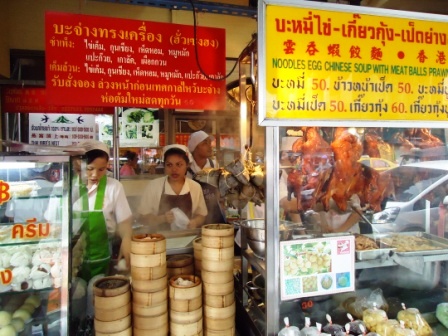 Bangkok Chinatown, Yaowarat Bangkok Chinatown, Yaowarat
 When the Siam (former name for Thailand) King Rama I shifted the kingdom’s capital to the eastern bank of the Chao Phrya River in 1782, the Chinese community was one of the first to feel its impact. When the Siam (former name for Thailand) King Rama I shifted the kingdom’s capital to the eastern bank of the Chao Phrya River in 1782, the Chinese community was one of the first to feel its impact.
The area that they lived was designated for the construction of the king’s new palace, now known as the Grand Palace, so the Chinese community had to shift further away to Soi Sampheng, also known as Soi Wanit. This street marked the beginning of a new Bangkok Chinatown or Yaowarat making it one of the oldest Chinatowns in the world.
Institutions typical of Chinatowns, clan associations, temples and monasteries, began to appear and the new Chinatown became the destination for new migrants who arrived from the end of the 19th century. Many of these institutions (Wat Mangkon Kamalawat, Thian Fah Foundation, Guang Dong temple, Leng Buai Ia Shrine) continue to function to this day and are also tourist attractions.
Yaowarat Today
Bangkok Chinatown has grown since then and today, its borders are marked by Phadung Krung Kasem Canal in the east, the Ong Ang Canal in the west, Luang Road in the north and the Chao Phraya River as the southern border.
The main road in Bangkok Chinatown is the Yaowarat Road, constructed during the reign of King Rama V. This road is often referred to as a dragon that stretches from Odean Circle to Sampheng market.
In 1999, Odean Circle where the dragon’s head is, was crowned with a Chinese archway to commemorate King Bhumipol’s 72nd birthday. From a feng shui perspective, this probably made the place even more auspicious for the community and the country.
The Royal family members have made several visits to Bangkok Chinatown especially during the Chinese New Year. The Thai Royal family is highly respected and very popular with the Thai-Chinese community so the Royal visits are always considered major events and people who participated retold their experiences with pride.
There are many shops in Bangkok Chinatown and many have large neon boards advertising their brand or products many of which are products for cultural consumption. These include articles for daily use, religious artifacts, and many of the common or popular foods such as tea, dumplings, bao and man tou, dim sum, bean paste pastries prosperity cake, bakkwa, peach kueh and even ang ku kueh.
Bangkok Chinatown is unique with its prominent number of shops and stalls offering birds nest soup and sharks fin soup. Some of these restaurants attract not only locals but Chinese from the region and even Japanese tourists.
Visiting Bangkok Chinatown
Being one of the oldest Chinatowns in the world, Bangkok Chinatown is worth a visit. You can choose to start from the dragon’s tail in the Sampheng market or the Chinese archway at the dragon’s head. Not far from the archway is the Yaowarat Chinatown Heritage Center showcasing the history of Bangkok Chinatown and its residents. A good place to start a tour of Bangkok Chinatown.
As you stroll in this Chinatown, you will notice that this is an authentic cultural site. There are some sign boards and a bus service to guide tourists.
Beyond that, it is a cultural space shaped by local community and dynamics, not managed or developed for tourist consumption. Definitely a must visit to understand the complex ways in which Thai-Chinese manage their ethnicity identity and their loyalty to the Kingdom.
Related Articles:

|

 Bangkok Chinatown, Yaowarat
Bangkok Chinatown, Yaowarat  When the Siam (former name for Thailand) King Rama I shifted the kingdom’s capital to the eastern bank of the Chao Phrya River in 1782, the Chinese community was one of the first to feel its impact.
When the Siam (former name for Thailand) King Rama I shifted the kingdom’s capital to the eastern bank of the Chao Phrya River in 1782, the Chinese community was one of the first to feel its impact. 
